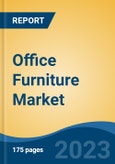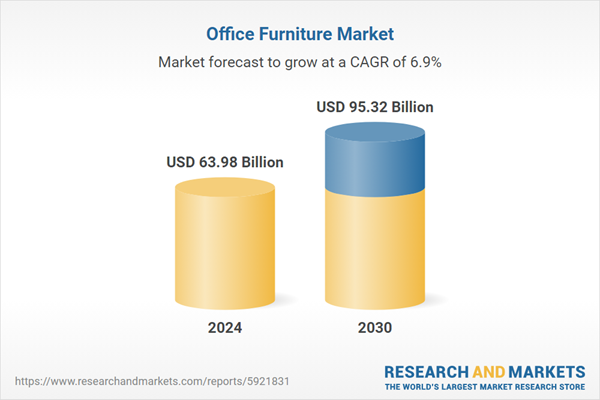Desks is the fastest growing segment, North America is the largest regional market
Speak directly to the analyst to clarify any post sales queries you may have.
10% Free customizationThis report comes with 10% free customization, enabling you to add data that meets your specific business needs.
Key Market Drivers
The global office furniture market is significantly shaped by the evolving landscape of work models and a heightened focus on employee well-being. These synergistic factors necessitate a fundamental shift in furniture design and functionality, impacting demand across various commercial and home office environments. Manufacturers are responding with adaptive solutions that support dynamic work settings and prioritize the health of occupants, underscoring a strategic pivot in product development and market positioning.The proliferation of evolving hybrid and remote work models profoundly influences the demand for versatile office furniture solutions. As companies adopt flexible attendance policies, the need arises for spaces that can accommodate both collaborative on-site work and individual focus, often requiring reconfigurable and smaller footprint furniture. This shift is evident in hiring trends; according to OfficeSpace. com's "10 Important Hybrid Work Statistics to Know in 2024", new, fully in-office job postings declined by 14% in 2023 from Q1 to Q4, signaling a sustained move away from traditional office setups.
Key Market Challenges
The persistent volatility in raw material prices represents a significant impediment to the growth of the global office furniture market. Manufacturers heavily rely on materials such as wood, steel, plastics, and textiles, and unpredictable price fluctuations directly impact production costs. These escalating input costs compress profit margins for manufacturers, making it challenging to maintain competitive pricing while investing in product innovation and expansion.According to the Institute for Supply Management, raw material prices for manufacturers rose by 4.1% in 2023, following a substantial cumulative increase since 2020. This upward trend in material expenses necessitates difficult decisions regarding pricing strategies, potentially leading to higher end-user costs or reduced product margins, which can dampen overall market demand. Such unpredictability also complicates long-term planning for product development and inventory management, creating an environment of fiscal uncertainty for businesses operating within the sector.
Key Market Trends
The global office furniture market is experiencing a significant transformation driven by advancements in technology and a growing emphasis on sustainable business practices. These shifts are compelling manufacturers to innovate beyond traditional design and functionality, introducing products that offer integrated technological features and support circular economy models. This evolution responds to evolving user expectations for more intelligent workspaces and corporate responsibility initiatives aimed at reducing environmental impact.Key Market Players Profiled:
- Okamura Corporation
- HNI Corporation
- MillerKnoll, Inc.
- Haworth Inc.
- Global Furniture Group
- Steelcase Inc.
- Kimball International Inc.
- KOKUYO Co. Ltd
Report Scope:
In this report, the Global Office Furniture Market has been segmented into the following categories:By Type:
- Seating
- Tables
- Storage
- Desks
- Others
By Sales Channel:
- Direct Sales
- Online
- Specialty Stores
- Others
By Region:
- North America
- Europe
- Asia-Pacific
- South America
- Middle East & Africa
Competitive Landscape
Company Profiles: Detailed analysis of the major companies present in the Global Office Furniture Market.Available Customizations:
With the given market data, the publisher offers customizations according to a company's specific needs. The following customization options are available for the report.Company Information
- Detailed analysis and profiling of additional market players (up to five).
This product will be delivered within 1-3 business days.
Table of Contents
Companies Mentioned
The companies profiled in this Office Furniture market report include:- Okamura Corporation
- HNI Corporation
- MillerKnoll, Inc.
- Haworth Inc.
- Global Furniture Group
- Steelcase Inc.
- Kimball International Inc.
- KOKUYO Co. Ltd
Table Information
| Report Attribute | Details |
|---|---|
| No. of Pages | 182 |
| Published | November 2025 |
| Forecast Period | 2024 - 2030 |
| Estimated Market Value ( USD | $ 63.98 Billion |
| Forecasted Market Value ( USD | $ 95.32 Billion |
| Compound Annual Growth Rate | 6.8% |
| Regions Covered | Global |
| No. of Companies Mentioned | 9 |









